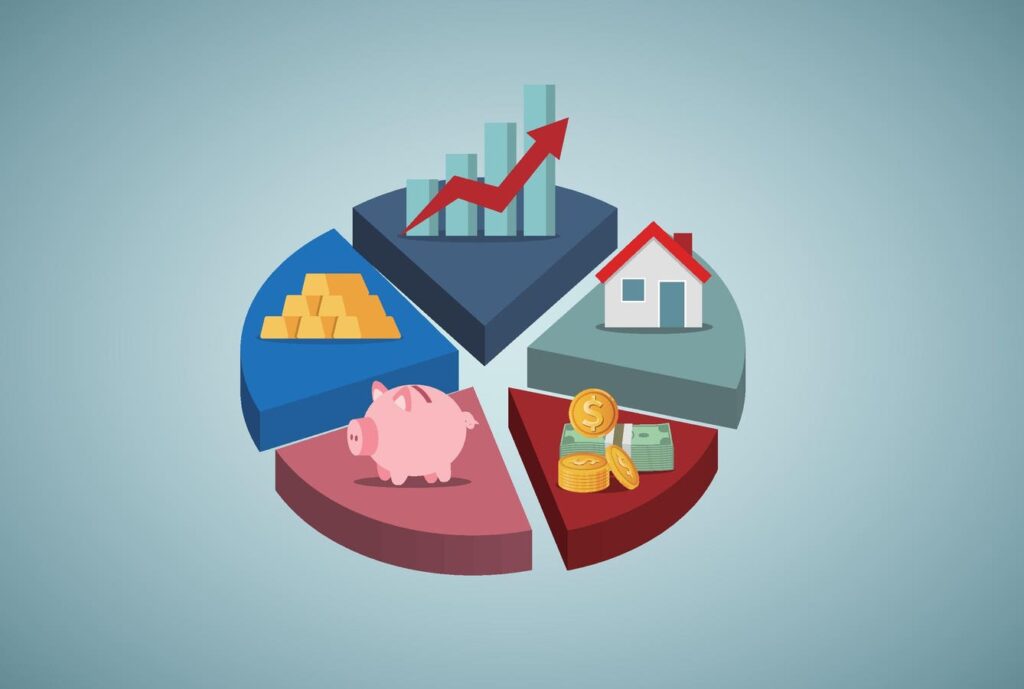For a long time now, it seems like the stock market has had a “theme of the year.” Clearly in 2024 it was AI, while 2023 was the year of recovery from 2022, which was a year of panic over a recession that never came.
This is odd, as past trends have lasted several years. From 2012 to 2014, for example, it was momentum driven by the Fed’s quantitative easing after the financial crisis. And the dot-com-bubble years spanned more or less from 1994 to 2000.
So will 2025 be another “theme year,” or will we see markets shift back to embracing longer-term trends? (Hint: I’m expecting the former, and we’re going to front-run the main theme I see for 2025 to grab ourselves some nice 10%+ dividends paid monthly.)
The Bulls Ran Wild in 2024
A quick glance at 2024 offers some clues as to where things are headed.
Above we see the performance of the benchmark index funds for the S&P 500 (in purple) and NASDAQ 100 (in orange), as of this writing. As you can see, the NASDAQ and S&P 500 rose almost the same amount.
That’s surprising; we’d expect the NASDAQ’s tilt toward AI names like Amazon.com (AMZN), NVIDIA (NVDA) and Alphabet (GOOGL) to propel it ahead of the S&P 500.
But things are, of course, more complicated than that. For one, consider that 61% of large American companies are planning to use AI to automate tasks. In other words, it’s not just tech benefiting from AI, but firms from across the entire economy.
This is good for the whole market, so it’s not surprising that the S&P 500 and NASDAQ 100 would more or less keep pace with one another.
Pricey Market Set to Make 2025 the “Year of Diversification”
The S&P 500 now has a price-to-earnings (P/E) ratio around 28, a level it’s only reached a few times in the last 40 years: late 2019, mid 2008, early 2001 and late 1997. Each of these peaks, unfortunately, came right before a bear market.
However, there is good news here. First, in 2001, 2008 and 2019, these peaks were hit after a bear market had already begun. In other words, the market hit this high valuation because earnings fell, decreasing the “E” in the P/E ratio and driving up the number overall. So today isn’t really comparable to those eras.
The bad news, though, is that 1997 was like today. At the height of the dot-com bubble, stocks priced in future gains that didn’t appear. If AI flops, we could see a similar correction to the one that occurred in the late 1990s.
The problem is that there’s no way to know if that pullback will happen in 2025 or, say, 2030 (or at all). So selling now could result in lost money in the long term.
Grabbing a Slice of Corporate Profits, With 10%+ Yielding Closed End Funds
With all this in mind, my prediction is this: 2025 will be the year more investors look beyond stocks, particularly for ways to profit from the still-strong market while hedging their downside.
That path leads straight to corporate bonds, which yield 7.3% as I write this, for companies with credit ratings of BB+ or below. And our favorite income plays, closed-end funds (CEFs), let us tap corporate bonds for even higher dividends to the tune of 10%+.
Our play, then, is to front-run the crowd into these funds, which include the PGIM Global High Yield Fund (GHY), a CEF yielding 10.1% that pays dividends monthly.
When it comes to high-yield bonds, many people irrationally worry about defaults. But here’s the truth: Even in the worst crisis, default rates would only spike to around 10%, so if you buy a CEF like GHY, which has bonds from 405 different issuers, you’d sharply limit your risk of loss.
Bear in mind, too, that the fund is run by five portfolio managers from Prudential (PRU), a company with a deep bench of talent and resources, providing even more reassurance here. Moreover, the default rates on high-yield bonds are currently around 1%—imperceptible in most CEFs, including GHY.
This little-known fund is also well diversified across sectors:
GHY is also well diversified around the world, with a strong base (47.5% of assets) in the US. That’s a nice setup for 2025, when interest rates are expected to decline in the US, sending capital looking for higher returns elsewhere.
Also, the fund yields 10.1%, and that yield is pretty reliable, as GHY hasn’t reduced distributions in five years, and in 2024 it out-earned its payouts, suggesting dividends remain covered.
Then there’s the fund’s discount to net asset value (NAV). This is the main CEF valuation metric, and right now GHY is discounted, trading at 4.7% below its portfolio value. That discount faded steadily through 2024 before plateauing at its current level in November.
If 2025 boosts demand from investors looking for high-yield alternatives to stocks, as I expect it to, GHY’s discount could shrink further. But even if demand holds steady, GHY still has reason to climb, thanks to its strong long-term performance history.
As you can see below, GHY (in purple) has more than doubled the corporate-bond benchmark index fund (in orange) over the last decade:
Double-digit yields and this wind at the fund’s back are strong selling points, with the high price of stocks sealing the deal. Add in the diversification away from stocks that GHY provides, and the fund is an attractive option now.
Michael Foster is the Lead Research Analyst for Contrarian Outlook. For more great income ideas, click here for our latest report “Indestructible Income: 5 Bargain Funds with Steady 8.6% Dividends.”
Disclosure: none
Read the full article here

